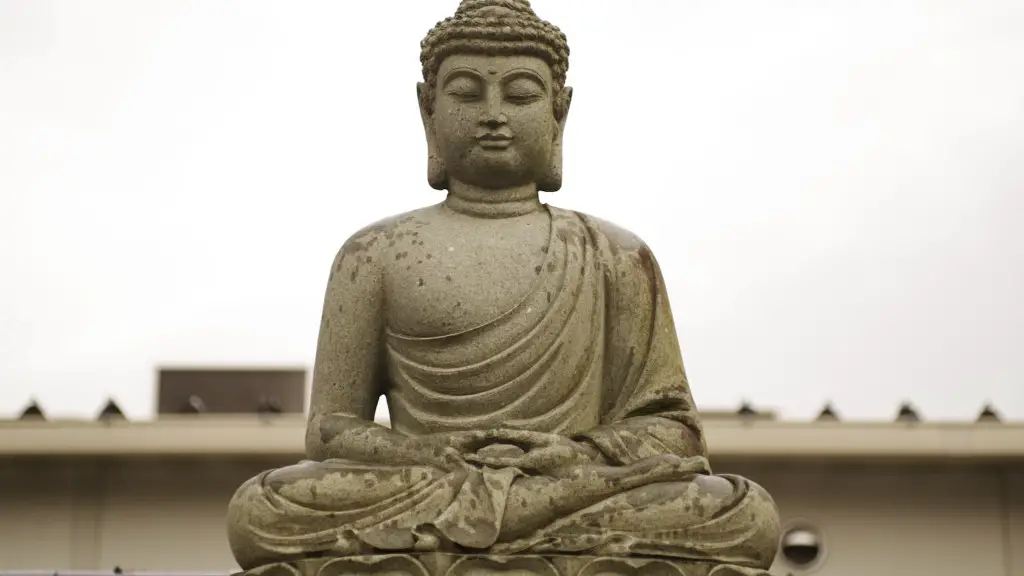Christianity is the largest and most populated religion in the world today. Over 2.2 billion people identify as Christians, with the number of denominations reaching up to several thousands, mostly across the western countries. How many different forms of Christianity are there? Data suggests that there are thousands of different denominations, sects and branches. Yet, one cannot really quantify the number as the range of variation is too vast and dynamic.
When discussing Christianity, theologians and practitioners commonly refer to three primary branches; Catholicism, Protestantism, and Eastern Orthodoxy. Each of these stand as their own denomination, and each is further divided into various sects. Catholicism, for example, consists of the Roman Catholic Church, and the Eastern Catholic Churches. Protestantism, on the other hand, is a broader umbrella comprised of dozens of different churches and sects such as the Lutheran, Baptist, Methodists, and Episcopal churches. Eastern Orthodoxy is traditionally comprised of the Greek Orthodox Church, the Russian Orthodox Church, and the Romanian Orthodox Church – although some would go as far as to include Eastern Catholic churches as well.
Scholars have suggested that understanding the large number of variations may be impossible. Variation between denominations is related to their interpretation of the bible, the rituals and practices they follow, the authority of church hierarchy, and the role of priests. Moreover, factions and denominations have shifted, merged, and split for centuries due to doctrinal disagreements. For example, the Orthodox and Catholic branches of Christianity split around 1054 A.D. due to conflicts on doctrine and the authority of the Vatican in Rome. Similarly, Reformist churches first split from the Roman Catholic Church in the 16th century, giving rise to the Protestant faith.
To further complicate things, many modern denominations blend elements from different branches. Several Protestant denominations are now engaging in liturgical rituals which are thought to be more typical of Catholic churches. Similarly, “Quaker” churches incorporate several cultural elements that draw heavily from Eastern Orthodoxy. As such, it can be said that the borders between denominations are often blurry and inconsistent.
It’s also important to mention that many different sects of Christianity have founded sects of their own, leading to hundreds of further divisions and sub-groups. For instance, Quakerism is a branch of Protestantism which branched off from Catholicism in the 16th century. This branch contains two different buildings; The Religious Society of Friends (Quakers) and the Conservative Friends. Similarly, Methodist churches have also led to the founding of several separate denominations, such as the Holiness Movement, which arose in the 19th century, and the Pentecostals, which emerged from Holiness movements just a few decades later.
New Denominations of Christianity
Another factor that contributes to the complexity of these numbers is the emergence of new forms of Christianity. For instance, the “Emerging Church” is a popular movement among modern Christian youth, which combines elements of traditional Christianity with a more activist and socially conscious approach. Similarly, Christian Scientists focus on the spiritual integration of healing, using modern sciences as opposed to traditional medicine. This is just the tip of the iceberg – the list of denominations keeps growing as new branches of Christianity emerge and existing branches merge and reshape themselves.
These changes do not seem to stop anytime soon. As new branches of Christianity continue to emerge throughout the modern world, it can be argued that the amount of denominations is increasing by the day. Estimates suggest that a detailed count of Christianity would yield more than 40,000 denominations – though this number is approximate at best. Therefore, there is no definitive answer as to how many different forms of Christianity are there.
Comparison: Catholicism and Protestantism
Whenever there is a discussion on Christianity, two branches usually stand out – Catholicism and Protestantism. These two denominations provide a great way to compare and contrast the essence of each branch. Catholics consider their leader, the Pope, as the mortal representative of Jesus Christ, and the ultimate spiritual leader of their church. They thus pay homage to the Pope and the Vatican through rituals such as papal masses, pilgrimages, and priestly ordination. In contrast, Protestantism rejects papal authority, instead shuffling power through democratic processes across all levels of the faith’s hierarchy. This branch is, thus, less ritualistic compared to Catholicism.
Catholics traditionally favor the idea of liturgy over scripture – they believe that the religious life should reflect the light of “Divine Liturgy”, or God’s plan, and that one should be blessed through rituals and prayers. On the other hand, some Protestant denominations place more emphasis on scripture than on spiritual rituals. These denominations also allow for a much greater degree of theological versatility, as leaders are free to explore different interpretations of the bible. Moreover, Protestantism is generally less focused on hierarchy, more decentralized, and more open to layman activity and social engagement.
Younger Denominations of Christianity
Younger denominations of Christianity are becoming an integral part of the worship scene. These typically vary from traditional interpretations in terms of worship styles, more relaxed dress codes, and creative approaches to religious life. Some of these younger denominations may have overlapping beliefs with traditional denominations, while others may be quite different.
One example of a popular younger denomination is the “House Church” model, which seeks to foster community through intimate gatherings with relaxed worship styles that omit traditional liturgies and rituals. In contrast, the “Eco Church” movement encourages believers to become more eco-friendly by focusing on sustainable living. Other denominations have arisen in recent years, such as the “Full Gospel” movement which combines elements of Pentecostalism with traditional Christian teachings and liturgy.
These denominations are an important part of the Christian family and provide an increasingly diverse set of worship options. Churches of differing denominations can learn from one another and create spaces for meaningful dialogue about spiritual matters. As more and more denominations enter the conversation, the number of variations will continue to increase, making it ever more difficult to definitively catalogue and quantify them.
Assessing Variations in Christianity
It is important to note that the vast majority of Christians believe in the same core values and spiritual ideas. Most would agree that Jesus is the ultimate messenger of God’s love and that spiritual transformation is an essential part of our salvation. As such, there is an underlying unity among all denominations. Nevertheless, many denominations do maintain distinct beliefs and practices that stem from their varying interpretations of the bible. As such, it is vital to remember that the diversity among churches should not lead to a separation of principles.
When assessing the variations in Christianity, it is important to examine the different denominations in light of their combined impact on the spiritual landscape. A greater understanding of the nuances between denominations can help to create spaces for more meaningful conversations on faith, love and justice. In fact, such dialogue can be essential in fostering a healthy Christianity that incorporates believers from all walks of life.
Traditional vs Emergent Christians
Within Christianity itself, one can see a shift between those with a tradition orthodox perspective and those who embrace a more modern “Emergent” approach. Traditional Christians tend to believe that certain core values and ideas are essential to the faith, while Emergent Christians hold a more open-minded perspective, focusing on changing perspectives and up-to-date interpretations.
Traditional Christians may criticize Emergent Christianity for losing touch with core values of the faith, while Emergent believers may accuse traditionalists of being too rooted in the past. It is important to remember that all sides are striving for the same purpose. A balance is needed between the two camps, as change and tradition often go hand in hand.
It is also important that both Emergent and Traditional Christians approach their differences with respect, incorporating their unique strengths and leaving behind their differences. We need to celebrate the diversity among denominations and learn from each other in order to create a positive and vibrant faith-based conversation.
The Future of Christianity Denominations
Christianity is currently in a period of change, with many modern interpretations, new denominations, and a push towards greater inclusion and meaningful spiritual dialogue. As long as such shifts are carried out in accordance with Scripture, they can be beneficial.
At the same time, it is important to keep in mind that Christianity has been, and will continue to be, different in different parts of the world. The many denominations, sects, and branches of Christianity have different customs, languages, cultures, and approaches to Christ. As such, it can be said that Christianity will continue to be highly diverse in the foreseeable future.
It is also likely that more denominations will emerge and existing denominations will take different shapes and forms. With the rising presence of technology, it is very likely that a much more dynamic approach to Christianity will take root. In other words, the proliferation of denominations and variation in Christianity is not likely to slow down anytime soon.
Integrating Respect and Compassion
Putting complexity aside, it is vital to recognize that all variations of Christianity exist within the same faith system. We must remember that our differences should be accepted and respected, as they each contribute to the greater good of the faith. All denominations should strive to create a welcoming and hospitable environment, integrating respect, compassion and understanding into all aspects of spiritual life.
Moreover, we should strive to educate ourselves on the different denominations of Christianity and have an open dialogue with believers of other faiths. By doing so, we can bridge the gaps between denominations and create a more unified, vibrant and welcoming atmosphere.


